As animal lovers, it’s essential to ensure our furry friends are living in a healthy and happy environment. Unfortunately, many animals worldwide suffer from stress, anxiety, and loneliness. Not only does this affect their well-being, but it can lead to unwanted behaviours such as aggression or self-harm.
Table of Contents
Our pets are no exception. To better understand the effects of anxiety on animals, this article will explore the most anxious animals globally and how they react to this feeling. By gaining insight into the behaviour of anxious animals, we can take steps to create a safe and secure environment that promotes their health and happiness. So why not read on and discover more?
List of 10 Most Anxious Animals
Chimpanzees
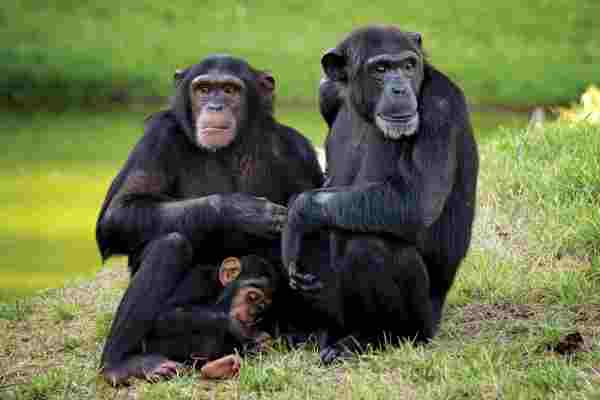
Scientific Name: Pan troglodytes
Type of Animals: Mammal
As beings that share a close genetic connection with humans, chimpanzees also experience emotions such as anxiety and fear, much like us. Although they cannot vocalize these feelings in words, they employ alternative means of expressing them.
Research indicates that anxious, threatened, or fearful chimpanzees exhibit their emotions through behaviours such as screaming, adopting an intimidating posture, or baring their teeth as a warning to others to keep their distance. Younger chimpanzees, when experiencing anxiety, often seek refuge by hiding behind their parents.
Anxiety in these animals is strongly linked to past experiences. Scientists have found evidence suggesting that the emotional state in chimpanzees closely resembles if not parallels, post-traumatic stress disorder. This can occur during their early years when they are exposed to violent scenes or undergo traumatic events in their lives.
Dogs

Scientific Name: Canis lupus familiaris
Type of Animals: Mammal
Up next, we have our beloved companions, dogs! However, it may come as a surprise to some that even our furry friends can experience anxiety.
Similar to any other animal, dogs often develop anxiety due to negative experiences or fears they may have encountered. When they come across something that reminds them of those incidents, it can trigger their anxiety and induce stress. However, it’s important to note that this is not the sole cause of anxiety in dogs. Loneliness is a frequent and significant factor, especially if your dog is the only pet in the household.
When feeling anxious, dogs express their emotions through behaviours like barking, howling, and seeking hiding spots around the house. They might even dart into the backyard and dig holes. Numerous symptoms can indicate anxiety in dogs, so if you notice anything unusual, it’s essential to delve deeper into the situation and take appropriate measures.
Cats

Scientific Name: Felis catus
Type of Animals: Mammal
Continuing with our pet discussion, we cannot overlook the topic of cat anxiety. Similar to other animals, cats often experience anxiety due to past traumatic experiences during their early stages or with previous owners. However, what surprises many is that cats can also exhibit anxiety without any apparent cause, which is considered natural for them.
The ways in which cats express their anxiety are quite intriguing. They may exhibit behaviours such as hiding, excessively loud meowing, trembling, and even excessive grooming. More common signs include loss of appetite and restless movement throughout the house.
It is crucial to highlight that regardless of the type of pet you have, it is advisable to take action when you notice such signs of anxiety.
Ostriches
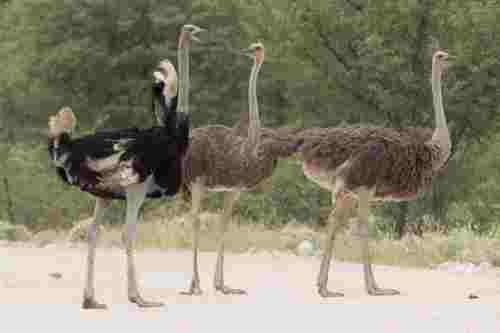
Scientific Name: Struthio
Type of Animals: Bird
Ostriches are fascinating creatures that have been the subject of many myths and misconceptions. They are often depicted with their heads in the ground, as a way to deal with stress and anxiety. However, this is far from the truth. When ostriches feel panicked or threatened, they are more likely to scream and run away, just like any other animal. If they can’t escape, they might flop on the ground and remain still in hopes of blending in with the environment. It’s important to understand that ostriches, just like humans, experience stress and other emotions in different ways. So next time you see an ostrich, don’t assume it’ll bury its head in the ground – they might surprise you with their behaviour!
Elephants
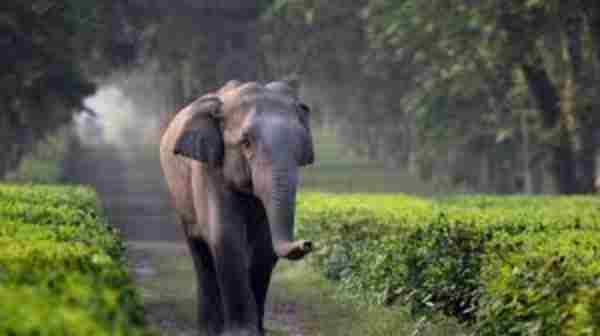
Scientific Name: Loxodonta
Type of Animals: Mammal
Elephants, like other species such as chimpanzees, exhibit signs of anxiety and post-traumatic stress disorder (PTSD). Despite being known for their exceptional memory, elephants struggle to cope with the accumulated stress.
It is not uncommon to observe male elephants experiencing these issues, particularly when they live alone or in groups with an imbalance of male-to-female individuals. Being highly emotional and social creatures, elephants rely on group dynamics for their well-being. Any disruptions within the group can lead to stress and anxiety.
For female elephants, the most common cause of anxiety and stress is the loss of their young. This profound grief intensifies their fear, especially if the loss is a result of hunting activities.
Elephants primarily communicate their emotions through movement. An anxious elephant may exhibit repetitive behaviours such as swaying, waving, or bobbing its head. In some cases, this anxiety can trigger memories of past traumatic experiences and result in aggression, including potential attacks on nearby individuals.
Cheetahs
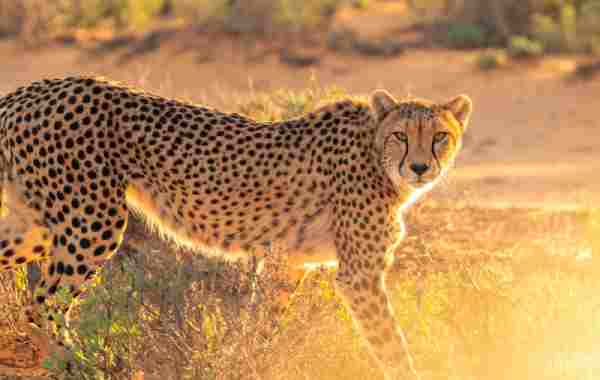
Scientific Name: Acinonyx jubatus
Type of Animals: Mammal
Cheetahs, known as the fastest of all wild cats, roam the world with their awe-inspiring speed. While they may appear fierce, cheetahs are also among the most anxious animals.
You may have noticed that cheetahs are sometimes seen in the company of a companion dog. But have you ever wondered why?
Unlike their lion relatives, cheetahs are solitary creatures that typically wander alone. This solitary lifestyle is not problematic for cheetahs in the wild. However, cheetahs in captivity often experience anxiety due to the lack of socialization opportunities with their own kind.
To alleviate this anxiety, cheetahs in zoos are often paired with a friendly canine companion. This partnership allows them to communicate and stay together, creating a more comfortable and manageable life for the cheetahs.
Goats

Scientific Name: Capra aegagrus hircus
Type of Animals: Mammal
Let’s delve into the topic of anxious animals, and one that often surprises people is the goat. Goats, beloved creatures by many, can experience significant levels of stress and anxiety.
When goats are overwhelmed by these emotions, they exhibit various signs. Some of the most common indicators include loud and frequent bleating, loss of appetite, lethargy, or, on the contrary, a surge of energy accompanied by attempts to escape or run away.
These animals possess diverse ways of expressing their emotions and can even display aggression or, in some cases, fainting. You might have come across videos of frightened goats that suddenly collapse – this occurs when their overwhelming feelings become too much for them to bear.
Opossums
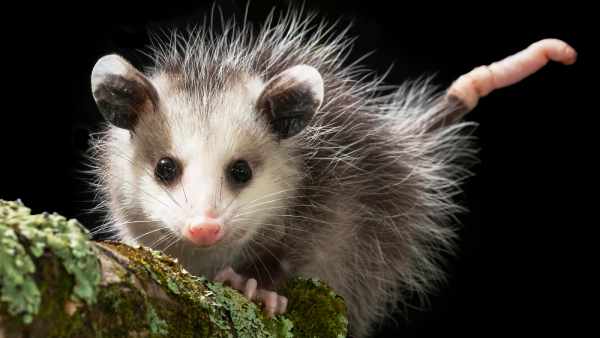
Scientific Name: Didelphidae
Type of Animals: Mammal
Have you ever heard of the play-dead trick? Well, opossums are the absolute masters of it!
This fascinating creature is easily frightened and constantly feels anxious, especially when it senses the presence of a predator or perceives a threat. In response, opossums resort to playing dead. This instinctive defensive mechanism is bestowed upon them by nature and proves highly effective in warding off attackers.
When frightened, opossums drop to the ground and appear lifeless. They cease breathing, as if their brain shuts down, and emit a pungent odour from their mouth and rear end. These combined actions serve as an elaborate ruse, fooling predators into thinking they’re dealing with a deceased opossum. As a result, the predator is compelled to leave them alone.
So, be cautious not to provoke anxiety in these creatures unless you’re prepared to encounter a smell that can overwhelm your sense of smell!
Toads

Scientific Name: Bufonidae
Type of Animals: Amphibian
Here’s a surprising fact for you: even toads can experience anxiety!
Similar to other animals on the list, toads can easily become anxious, primarily due to stress. They are prone to fear and get easily startled by predators or anything that they perceive as a threat.
There are several indicators that can help you identify an anxious toad. They may attempt to flee in a frantic manner, emit croaking sounds, change colouration, or even enter a state of paralysis, resembling the act of playing dead.
These reactions are primarily driven by anxiety and stress and can vary among different subspecies of toads. For instance, if you were to turn a toad onto its back, it might become immobilized, frozen in fear and anxiety caused by the sudden disturbance.
So, next time you come across a toad, remember that they too can experience anxiety and it’s important to treat them with care and respect their natural behaviours.
Chickens
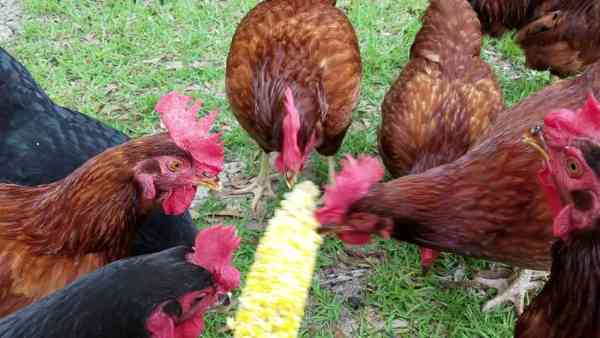
Scientific Name: Gallus gallus domesticus
Type of Animals: Bird
We have reached the final animal on our list of anxious creatures: the chicken. Nervous chickens are easily noticeable, as they frequently experience stress in both free-ranging and confined environments.
The degree of anxiety and stress that chickens endure can vary, depending on the specific conditions they are exposed to. These factors play a role in determining the severity of their symptoms.
When chickens become anxious, you may observe abnormal feather pecking or excessive preening, which can lead to feather loss. In some cases, they may exhibit problematic behaviours such as egg-eating or aggression towards weaker members of the flock. These symptoms are indications of an unhealthy environment for the chickens, and if left unaddressed, they can result in heightened stress and even death.
Stress can also cause a temporary halt in egg-laying. This is often one of the first signs of an issue, signalling the need for intervention. It is crucial to take action by modifying the chicken’s environment and addressing any potential sources of anxiety.
By proactively managing their environment and minimizing stressors, we can help create a healthier and more comfortable living space for our feathered friends.
Reference:
- https://www.npr.org/sections/13.7/2014/02/20/279661986/ape-dread-dog-worry-animals-and-anxiety
- https://www.ncbi.nlm.nih.gov/pmc/articles/PMC3263396/
- https://www.abc.net.au/radionational/archived/bodysphere/features/4837824#

Jeevan Kodiyan
An animal enthusiast with an interest in zoology, studying the behavior and activities of animals in the wild habitat. I work on research projects related to species conservation and endangered species protection. I also leverage zoology to become an educator, educating others about the importance of protecting our natural environment and the beauty of animals in their natural habitats.









